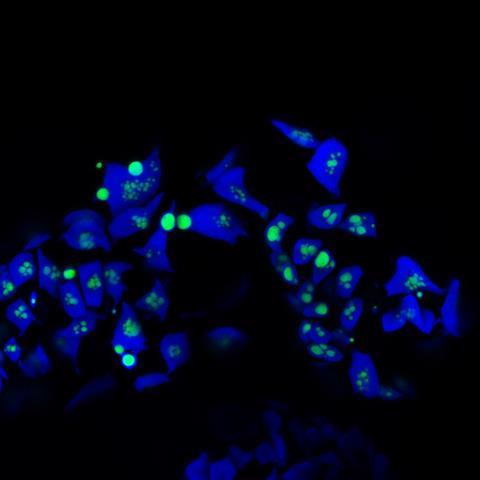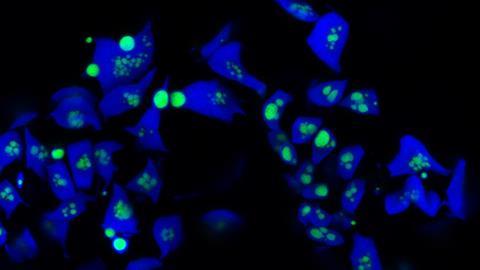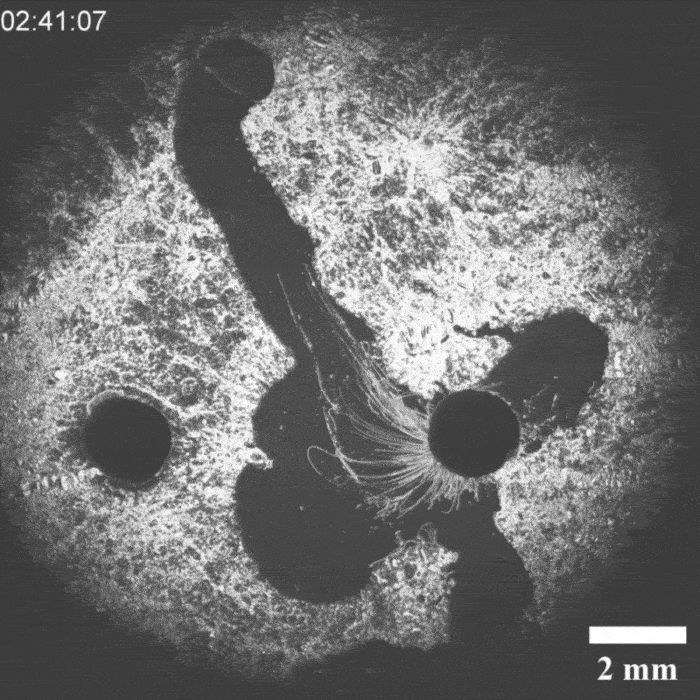Hornwort, a moss, is capable of highly efficient photosynthesis thanks to a ‘turbocharger’ that allows this tiny plant to concentrate CO2 in its cells.
Don’t be fooled by the unimpressive appearance of the hornwort. This humble moss outperforms almost any other plant, including our most important crops, when it comes to photosynthesis. Hornwort (Anthoceros agrestis) owes this capability to the presence of tiny structures in its cells, known as pyrenoids.

Pyrenoids are liquid-like compartments that contain high concentrations of the enzyme Rubisco, which captures CO2 and converts it into sugars. Rubisco is the central player in photosynthesis, but is notoriously inefficient because it also reacts with oxygen. The pyrenoids are surrounded by channels and enzymes that pump CO2 directly into these structures, ensuring that Rubisco is continuously fed with the desired raw material and is not ‘distracted’ by other compounds.
Tanner Robison and colleagues from the Boyce Thompson Institute in Ithaca (NY) used imaging techniques and genetic analysis to unravel the modus operandi of the hornwort-pyrenoids and to compare the mechanism to that of photosynthetic algae. It turns out the hornwort has evolved a much simpler approach, with fewer components and moving parts than algae use. ‘It’s like finding a simpler, more efficient engine design’, explains co-research leader Fay-Wei Li in the accompanying press release. ‘This simplicity could make it easier to engineer similar systems in other plant, like essential crops.’ This may result in a serious increase in crop yields, without the need for more land or other resources.
Tanner Robison, et al., Hornworts reveal a spatial model for pyrenoid-based CO2-concentrating mechanisms in land plants, Nature Plants (2025), doi:10.1038/s41477-024-01871-0













Nog geen opmerkingen